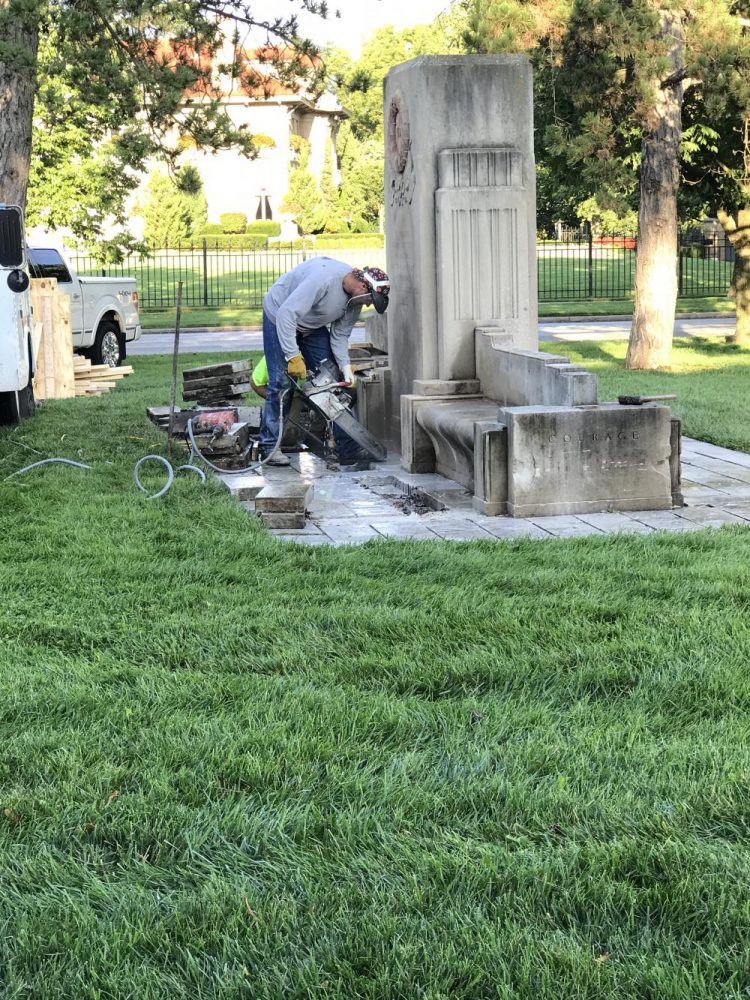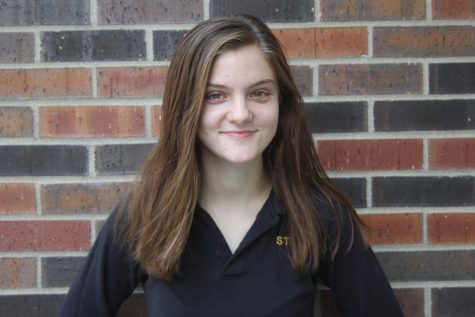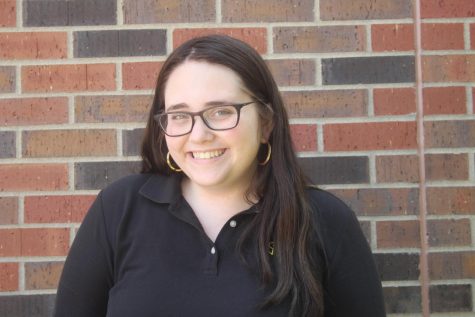Close to Home: Charlottesville ignites a nationwide debate about controversial monuments
In the wake of alt-right demonstrations in Virginia, Americans everywhere are examining questionable monuments in their own communities.
September 18, 2017
A warm night in mid-August marked the beginning of what would come to shock Americans everywhere. Several hundred neo-nazis, neo-confederates, gun-toting militia, and various other brands of white nationalists marched on the University of Virginia campus August 11. The evening march ignited an otherwise clear Friday night with the heat of countless lit torches and the echoing chants of “You will not replace us,” and “Jews will not replace us.” The organized rally gave rise to a weekend of political unrest and racial tensions in the city’s center in which clashes with counter-protesters led to deadly violence.
As news of these events came flooding in through Twitter and TV news, theology teacher Michael Sanem’s phone buzzed.
“I had a friend who was in Charlottesville for a wedding, and he was sending us pictures and videos and it was super creepy. My first reaction was sadness. That these things are still going on in 2017,” Sanem said.
When StarWrite Center coordinator Michelle Johnson first learned of the rally she used the same word to describe her first thoughts, though not without denoting her lack of surprise.
“Honestly I was as upset with the people who were surprised by it as I was with the event itself,” Johnson said. “At what point did we think this wasn’t going to happen in a country that has yet to deal with its racism?” Johnson questioned. “And with people in its office who don’t seem to be wanting to address that problem?”
This question of confronting racism and in turn the history of the United States is being debated on a national scale by civil rights activists, lawmakers and the President alike, sparking deeply opinionated conversations in communities and classrooms of every kind. Citizens are using their local historical contexts to try to understand today’s reality.
Kansas City itself has a history deeply influenced by race. Data maps shared by KCUR in May of 2014 show Troost Avenue as the dividing line in the city in terms race, median income and education.
“Like many American cities, we were highly influenced by the great migration of African-Americans from the South and then equally by desegregation and the white flight that kind of took place because of that,” Sanem said.
‘White flight’ is described as the migration of city-dwelling whites into exclusive, all-white suburbs to escape the integration of cities, effectively prolonging segregation.
“What we’ll study in [Social Concerns] that’s unique about Kansas City is the role of J.C. Nichols in constructing what we now know as suburbia,” Sanem said.
Kansas City native J.C. Nichols was a real-estate developer in the 1930s and is credited with inventing racially restrictive covenants, a segregationist practice that prevented owners from selling or leasing their property to African-Americans. A picture of Kansas City at the time would reveal a black community forced into cramped apartments near 18th and Vine contrasted with one of Nichols’ most visible marks on the city, the Country Club Plaza. The Plaza was designed for the upper-class whites of Kansas City. Starting in 1934, the commercial district’s opening gates at 47th Street and J.C. Nichols Parkway were adorned with a monument gifted to the city by the United Daughters of the Confederacy (UDC).
In 1958, the statue was moved to a grassy median on 55th and Ward Parkway, its resting place until the brisk morning of Friday, Aug. 25. A crew worked to dismantle the 83 year old monument. Commuters, in response, slowed slightly while passing by the scene, some honking energetically.
According to the Kansas City Star, the monument’s removal came at the request of the UDC’s Independence, MO chapter after it had been vandalized just a week before, in the wake of Charlottesville. The vandal used red spray paint to mark the monument with a hammer and sickle, a well-known Communist symbol, as well as illegible letters.
As the memorial came down, many questioned why it originally went up. The monument, along with many others, was erected in the midst of the Jim Crow era of the United States. This detail does not escape Johnson.
Jim Crow laws, enforced from 1877 to 1965, were a series of federal and state laws that segregated black and white Americans. They ranged from dictating where black people could eat, drink and sit to who they could marry.
“It’s not as if these statues all around the country went up right after the Civil War,” Johnson said. “Which they shouldn’t have anyway, because they lost, but it’s not even as if that’s when they went up. Most of these statues honoring the Confederacy came up during Jim Crow, 100 plus years later, so that means it’s about something else.”
Though many feel monuments commemorating the confederacy and its leaders were symbols of intimidation targeted at African Americans, others aren’t so sure of the meaning behind the memorials.
Junior Mia Tomasic is one of these people. Though she can understand the frustration, she is undecided on whether Confederate monuments should be left up or come down.
“I can most definitely see how [Confederate monuments] can be offensive to people and I don’t want anyone to be offended,” Tomasic said. “I’m not personally offended by them but I don’t have that history that some people do.
Tomasic’s stance on whether or not monuments should be taken down depends on where they are. “I think if they’re in front of government buildings they should be taken down, but…I think before you even start talking about taking them down you have to talk about how many millions of dollars it’s going to cost.” Tomasic says.
Tomasic proposed alternatives for what this money could be used for.
“Maybe it could go to something else like early childhood care, or getting so many homeless off our streets,” Tomasic said.
She also questioned what the monuments would be replaced with. Following the events in Charlottesville, many suggested replacing them with statues of civil rights and abolitionist leaders like Harriet Tubman, Martin Luther King Jr. and Rosa Parks. Others, however, feel that to replace Confederate monuments with civil rights heroes would be working to rewrite or gloss over history.
“I personally don’t think these monuments are up for us to worship them,” Tomasic said. “I think of them as informational. Like the school bus goes around it and goes ‘Okay, this is up because this is what happened and we have to make sure we don’t do it again.’ Because as much as we want to try and change history, we can’t, we have to learn from it.”
Sanem, who majored in history in college, offers a different view.
“Any student of history knows that history is not set in stone, it is reinterpreted and reexamined and we often reexamine our history and find things about our institutions, our church, our neighborhoods and our families that are disappointing and we can, and should, acknowledge those,” Sanem said.
Many students of history have drawn parallels between slavery and segregation in the United States and time periods in other countries. One of the most widely used analogies is Nazism in Germany.
“I have no issue with [Confederate monuments] coming down. And anybody that wants to fight that has the right to, but understand that it’s like in Germany it’s not cool to have Nazi memorabilia, just because it’s history,” Johnson said. “The fact that they know that, but we are fighting it, keeps going back to what I keep saying. We as a country have not dealt with our racist history and our racist present.”
After James Fields, a man reportedly obsessed with Nazi history, ran his car into a group of counter-protesters, many called on President Donald Trump to condemn the white nationalists marching in Charlottesville. He came under fire when, in response, he condemned “hatred, bigotry and violence on many sides.”
“Americans have always looked to the President to not just be a public leader but also a moral leader,” Sanem said of Trump’s comments. “I think President Trump in a way is, for whatever reason, abdicating that role.”
Many share Sanem’s belief, accusing Trump of emboldening the white nationalists. Johnson, however, suggests a cause more deeply rooted.
“I don’t think it was the 2016 election [that ignited events in Charlottesville], I think it was the 2008 and the 2012 elections that people were reacting to, which created the 2016 election,” Johnson said. “So I think that this country, again, has always had a race problem that it has fooled itself into believing it was not in existence.”
In addition to coordinating the StarWrite Center, Johnson co-moderates the Inclusion Project with counselor Kelly McKee. Johnson describes the Inclusion Project as “an extracurricular whose purpose is to have a project to focus on that centers around diversity and inclusion and welcoming differences in the STA community.”
The project is in its fourth year. Every year, the Inclusion Project’s members take on a task designed to emphasize diversity at St. Teresa’s. Johnson says the project is necessary “so that people know it’s a good thing to talk about differences.”
This past school year, members of the Inclusion Project took on the task of finding the first black student to attend St. Teresa’s by going through old yearbooks. Eventually, they found her. She attended St. Teresa’s during the midst of J.C. Nichols’ real estate development.
“St. Teresa’s just celebrated its 150th anniversary,” Johnson said. “When we did our Inclusion Project, we only had to go back to the 30s or 40s before we had a black student. So the history of black students at St. Teresa’s Academy is not 150 years.”
Though Johnson acknowledges the inclusivity and welcoming environment St. Teresa’s strives to put forth, she still feels that there is a lot to be done – not just in our school community, but in the nation as a whole.
“We have a bad habit in this city of segregating ourselves and just dealing with people who are just like us and have our exact same background and our exact same experiences,” Johnson said. “If I had some magic wand I could wave to impart a piece of knowledge it would be that having these conversations shouldn’t make us defensive and that we should be able to talk about our differences and our experiences with the ease in which we discuss a class, a dance coming up or something we saw on TV,” Johnson said.
Johnson went on to explain that when certain topics are taboo, then when they come up it creates tension. “I just want people to have one-on-one conversations with each other in ways that make people feel heard and respected and not attacked or uncomfortable. That would be my wish.”






Seydiman • Sep 23, 2017 at 8:38 am
I have read this article and found the reasoning of Marguaux gorgeous. She went through the “today’s reality” with a well sharpened pencil. Her analysis is relevent and the conclusion is very telling. So many debatable points though. I would just say…great job Renee!